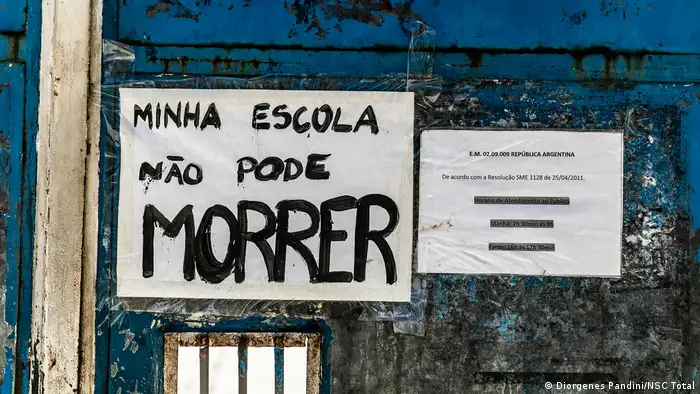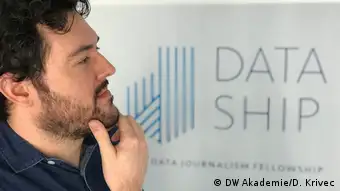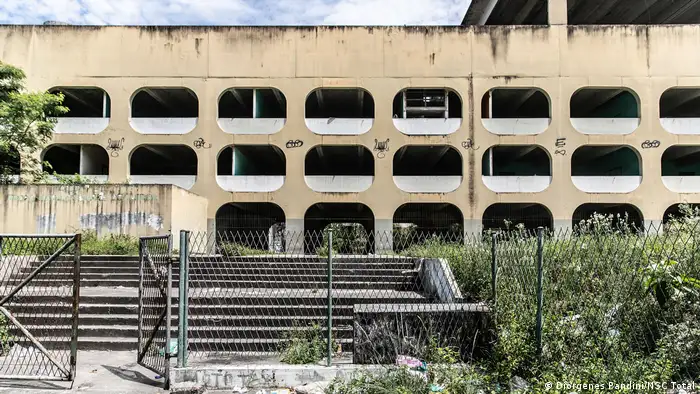Data Journalism
How public data revealed Brazilian students were being left behind
More than 105,000 schools had closed since 2007 — that's one school every hour and four minutes. This number was uncovered when Dataship fellow Cristian Edel Weiss was researching school closures in Brazil.

"My school must not die," reads a sign written by a student on the gate of Republica Argentina High School in Rio de Janeiro, Brazil
Compared to other Latin American countries, Brazil has lagged behind when it comes to public transparency — but legislation passed in 2011 provided an opportunity for change.
While countries such as Mexico, Ecuador, Uruguay and Chile passed transparency laws in the mid-2000s, Brazil did not pass the so-called Access to Information Law until 2011. It opened the door for the federal government and the governments of states and municipalities to publish open data on the Internet.
This movement allowed society and journalists to monitor the actions of the authorities like never before. Journalists obtained more ammunition to investigate authorities and write accurate stories. Today's fact-checking movement to combat misinformation has only become viable because there is open public data to verify the statements of authorities and politicians, for example. Without it, journalists and society become hostages of public institutions.
Finding the numbers
One database that started in the 1990s and has become more accessible following the transparency law is the Brazilian School Census. Held every year by the Ministry of Education, the census gathers information from all private and public schools in Brazil, with data on infrastructure and the situation of teachers and students. Openly available in both summary and detailed versions (the so-called microdata), the School Census allows me to monitor the evolution of Brazilian education and is used as a parameter to define the distribution of financial resources to municipalities and states, which are responsible for basic education in Brazil.
The School Census inspired my project "How a School Dies" under DW Akademie's data journalism fellowship program. Since 2015, I had been requesting and receiving isolated information about school closures in southern Brazil. My attempts to request this type of information from the local government were always frustrating. Talking about a closed school is not an easy matter, because people have a connection to the place where they studied. Therefore, politicians avoid touching the subject and make it difficult to access detailed information at a local level.
The answers to my questions were hidden in the raw version of the School Census database. It is hard to imagine an average citizen without knowledge of statistical programs examining this data in a common spreadsheet reader. Moreover, the file is so big that it discourages lay people. For a country like Brazil, which has an average of 51 million students, a single archive of census microdata is more than 10 gigabytes. An additional challenge is that each column of these spreadsheets is filled with numerical codes, as a way to make the database lighter, which need to be 'translated' before being analyzed. This was the challenge I decided to face in this project.
105,000 schools closed since 2007
The first question to answer was: How many schools were closed in Brazil from 2007 to 2019? The answer was shocking: 105,836. In other words, one school was closed every hour and four minutes. Among those are 65,000 that will never open again (including nurseries, primary and secondary schools and youth and adult education institutions) and another 40,000 temporarily deactivated. On average, for every 10 schools closed, 6 were in rural areas.
This leads me to a second question: why are these schools closed? And the answer again is in the public data. Although it is a young country, Brazil's population is getting older and the birth rate is decreasing. This is reflected in the total number of enrolments recorded every year. With fewer students, the schools have become too expensive for the government to keep running. In an attempt to save funds, local governments decide to close some of them. This is when a third and harder question arises: What happens to the students? When I enquired about this, governments always answer that the children and adolescents went to another school closer to them, that no one was left without a place to learn. But I found that was not true at all.
Students dropping out
In one of the spreadsheets of the microdata from the School Census, there is student data. Each student has an unique ID number, although their identity is withheld. I decided to do something unprecedented, crossing all the IDs year by year, in order to see the trajectory of the students in Brazil between 2007 and 2017. More than 550 million enrolments were analyzed. As a result, I found that a student at a school that has just closed is more than twice as likely to give up studying in the following year than a student who was not affected by these policies.
The data helped me to go into the field in search of the stories of those affected. As I looked at each closed school, there are more alarming situations. There are cases where more than 50% of students stopped studying the year after their school was closed. One of these students is Fabrício Sousa, aged 26. When José Pedro Varella State School was closed in 2011 in Rio de Janeiro, Sousa gave up studying. He used to study at night, because he was already working during the day, and had just two more years to go before graduating. The school was on his way home. When it closed, the other schools were too far away.
During my research, I found that governments do not do this kind of monitoring in order to see what happens to students after their school closes or ensure that they do not give up their studies. The data I identified was taken to the National Board of Education to stimulate discussion on the adoption of good practices in order to avoid further dropouts in the future.
In addition to these impacts, I found problems with public patrimony after the closure of schools. Several buildings were left abandoned and were the target of thefts, generating millions in losses to the public treasuries. And the country cannot afford this waste. According to UNICEF, there are still 2 million children and adolescents out of school.
Data protection law hinders research
Although the microdata from the School Census is open, recently there have been changes that restrict access to educational information. Under the justification that the Ministry of Education is adapting the data protection law, since 2018, the students' ID numbers can no longer be traced making it difficult to analyze data such as what I used in this project. Without the existence of open and transparent data, this kind of in-depth journalistic story would not be possible.
- Date 21.05.2020
- Author Cristian Edel Weiss
- Feedback: Send us your feedback.
- Print Print this page
- Permalink https://p.dw.com/p/3caVr
- Date 21.05.2020
- Author Cristian Edel Weiss
- Send us your feedback.
- Print Print this page
- Permalink https://p.dw.com/p/3caVr


